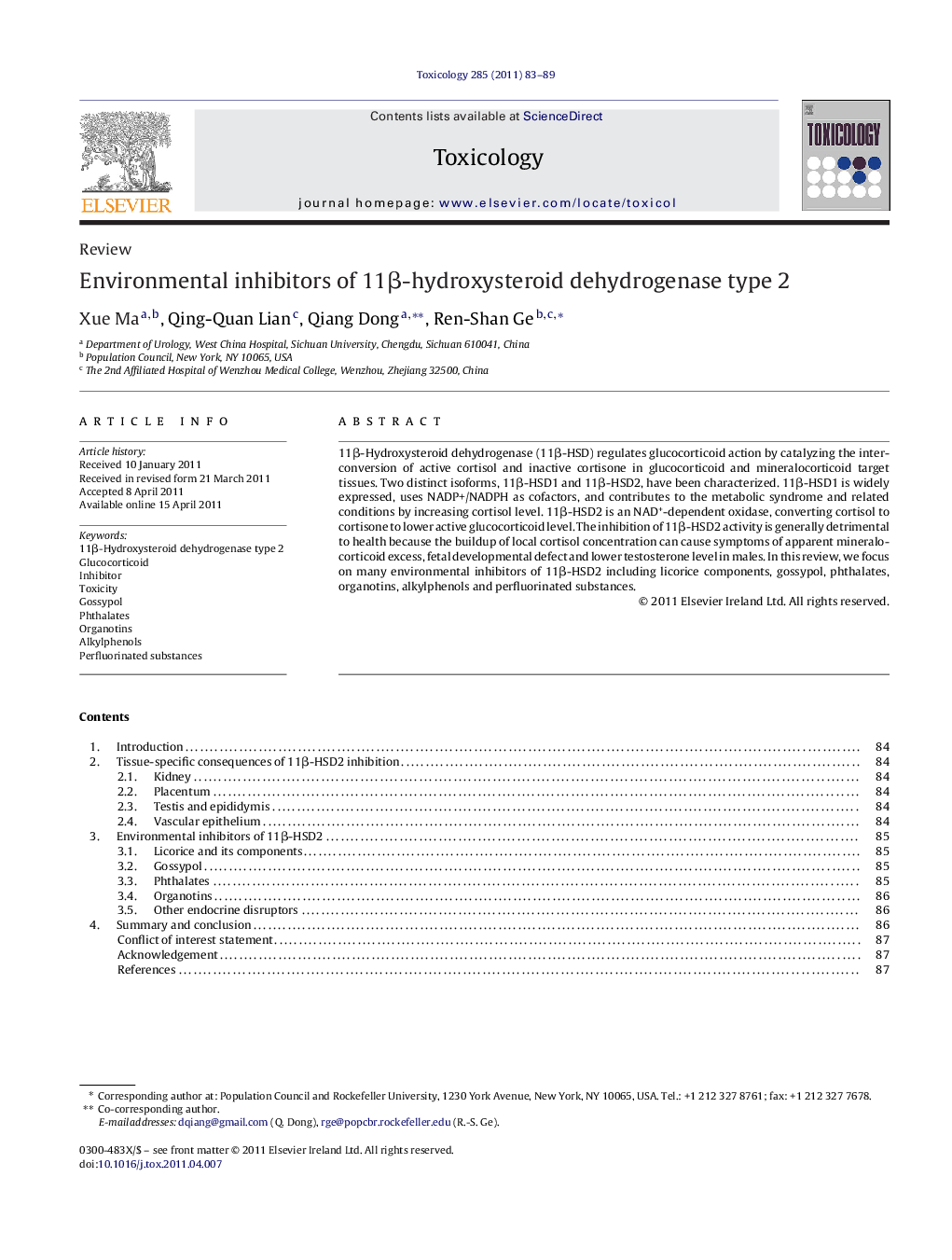| Article ID | Journal | Published Year | Pages | File Type |
|---|---|---|---|---|
| 5859644 | Toxicology | 2011 | 7 Pages |
Abstract
11β-Hydroxysteroid dehydrogenase (11β-HSD) regulates glucocorticoid action by catalyzing the interconversion of active cortisol and inactive cortisone in glucocorticoid and mineralocorticoid target tissues. Two distinct isoforms, 11β-HSD1 and 11β-HSD2, have been characterized. 11β-HSD1 is widely expressed, uses NADP+/NADPH as cofactors, and contributes to the metabolic syndrome and related conditions by increasing cortisol level. 11β-HSD2 is an NAD+-dependent oxidase, converting cortisol to cortisone to lower active glucocorticoid level. The inhibition of 11β-HSD2 activity is generally detrimental to health because the buildup of local cortisol concentration can cause symptoms of apparent mineralocorticoid excess, fetal developmental defect and lower testosterone level in males. In this review, we focus on many environmental inhibitors of 11β-HSD2 including licorice components, gossypol, phthalates, organotins, alkylphenols and perfluorinated substances.
Keywords
Related Topics
Life Sciences
Environmental Science
Health, Toxicology and Mutagenesis
Authors
Xue Ma, Qing-Quan Lian, Qiang Dong, Ren-Shan Ge,
